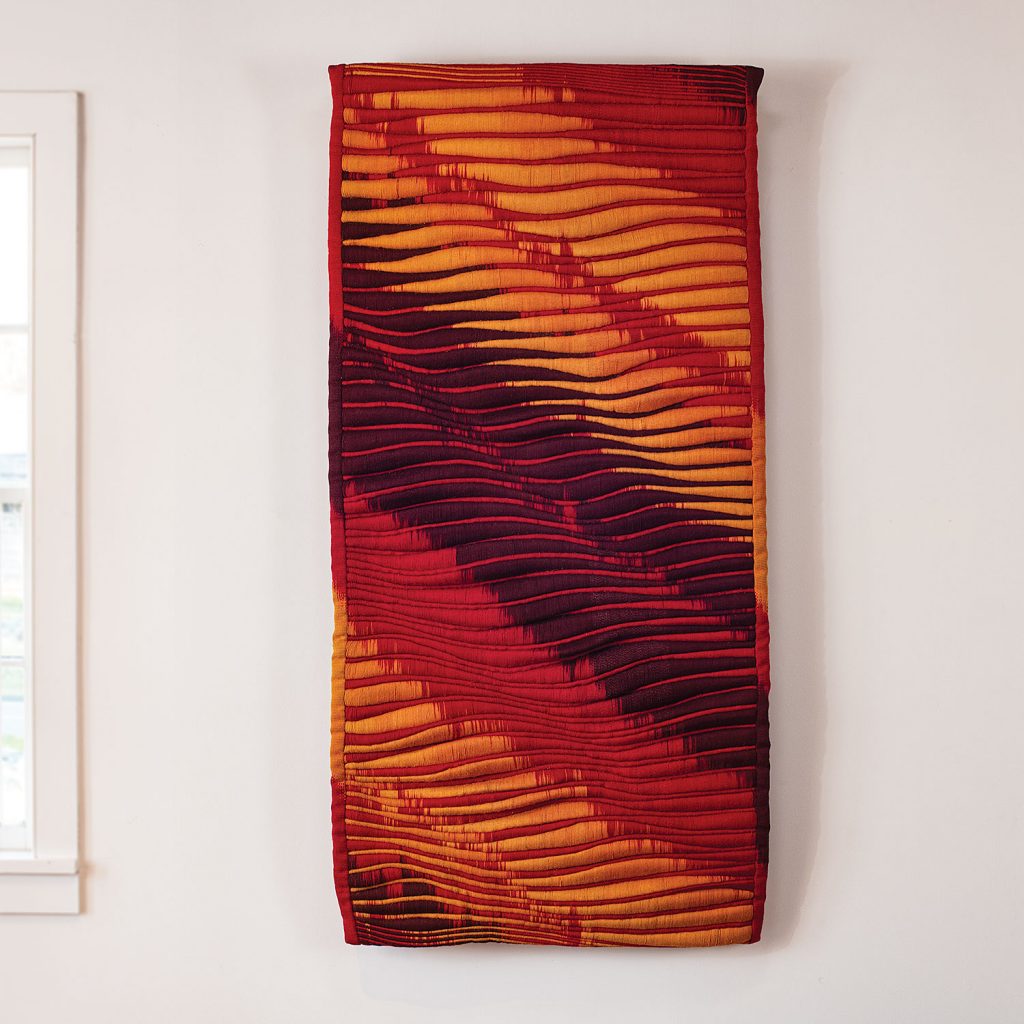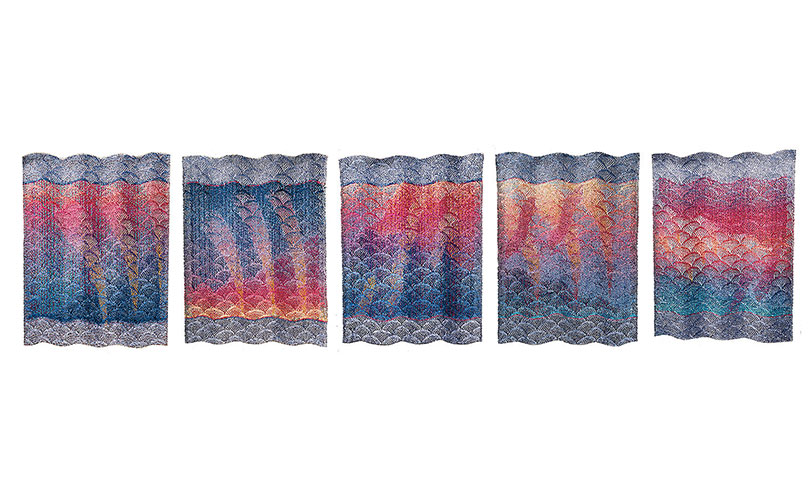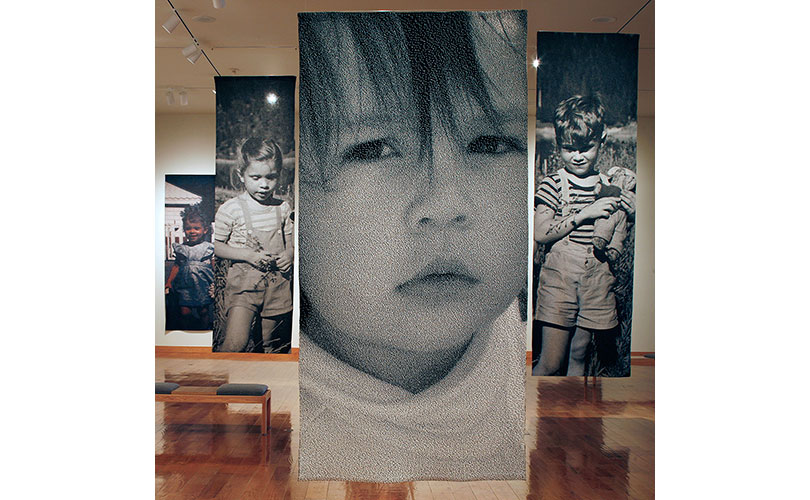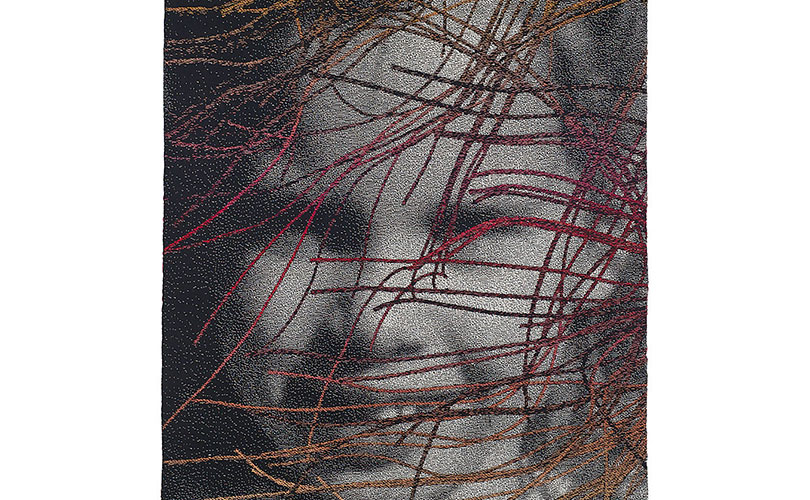Lia Cook is a relentless innovator who has been involved in textile experimentation since her graduate and undergraduate work in Arts and Design at the University of California, Berkeley in the 1970s.
While Cook has created varied bodies of work in her storied career, her explorations have a consistent theme. They all involve the experience of touch, the sensation of the body and the physicality of cloth. “Cook’s work defies the ‘ocular-centricity’ of Western art by overturning the hierarchy of the senses and repositioning the sense of touch in the foreground. While the work is never handled in the gallery or museum, the sense of touch is so fully activated that the experience of the work is startlingly touch-sensory,” writes Deborah Valoma, in Lia Cook: In the Folds — Works from 1973 – 1997.

Cook’s early work aimed to envelop the viewer in monumental cloth. “The work was imposing, strident and typically employed magnified imagery of weave patterns as the subject,” writes Valoma, “depicting both in realization and representation the structural realities of weaving.” Space-Dyed Weaving-2, created in 1975, is an example of work from this period. So is Spatial Ikat III-2, the prize for the winner of our Art for a Cause 2021 sweepstakes with UncommonGood (uncommongood.io.), which continues through July 31st.

In the 1980s, cook turned her attention to textile structures — curtains, pockets and crazy quilts. Through the Curtain in 5 Scenes Transposed, which hints at curtains on a stage, is from this period. In the 1990s, Cook created works that took inspiration from images of fabric painted during the Renaissance, when images of drapery were an essential part of a painter’s training.

As Valoma describes, in works like Material Pleasures, created in 1993, Cook painted the imagery of draped fabrics on linen or abaca with acrylics or oil paints. The canvases were finely stripped and inserted as weft into hand-painted warps and woven on a 32-harness loom, purposefully defying conventional definitions.

In the mid-90s, after two artists-in-residencies, one in Italy and one in Germany, Cook’s work took yet another turn — focusing on the Jacquard loom and incorporating photography, to create works that were narrative and personal. This body of works was featured in The Embedded Portrait, her solo exhibition at the University of Wyoming Art Gallery in 2009.
In 2010, Cook’s shifts again. As an artist-in-residence at the University’of Pittsburgh’s TREND program (Transdisciplinary Research in Emotion, Neuroscience and Development, Department of Psychiatry, School of Medicine), Cook was able to compare the emotional responses of viewers to actual photographs and to her weavings of photo images “I wanted to explore the nature of people’s emotional connection to woven faces,” she explains. “I thought that the material and structural aspects of the textile, the physical evidence of the hand and the memories associated with these tactile experiences might intensify the reactions. Something about the textile engenders embodied emotional response beyond that of the two–dimensional photo.”

To test her hypothesis, Cook, in collaboration with scientists at TREND tried several approaches. Cook and the scientists could see noticeable differences in individual images from MRI data and in records of electrical brain activity from EEGs when volunteers compared flat and woven images. She underwent this MRI imaging on herself and then, using software from MGH/Harvard, Biomedical Imaging Lab, she manipulated the images for a series of weavings that combine faces and images of brain fibers, as you can see in Neural Networks, 2011.
Cook’s experiments in neuroaesthetics continue — and as always, she makes adjustments and changes her gaze to produce something new. Recently, she has merged three fibers into her imagery — neural fibers, plant fibers and the parallel lines that she used in the 1970s. “Art and science are more similar in their process than many people think,” says Cook. “Each requires starting with a question, being curious, discovering something new, being willing to take the answers or lack of answers — good or bad — and building on that for the future.”
Keep watching, as this remarkable artist continues to experiment, innovate and create remarkable work.
